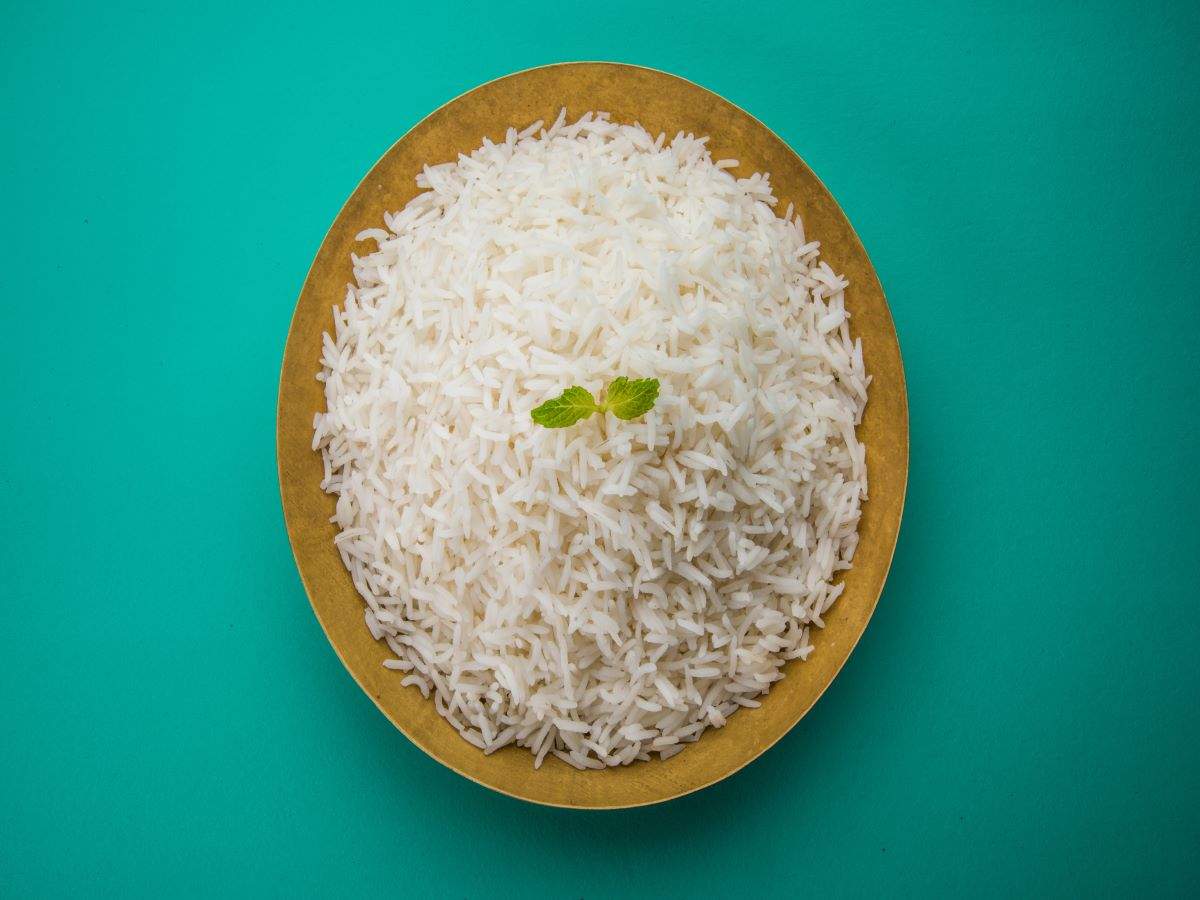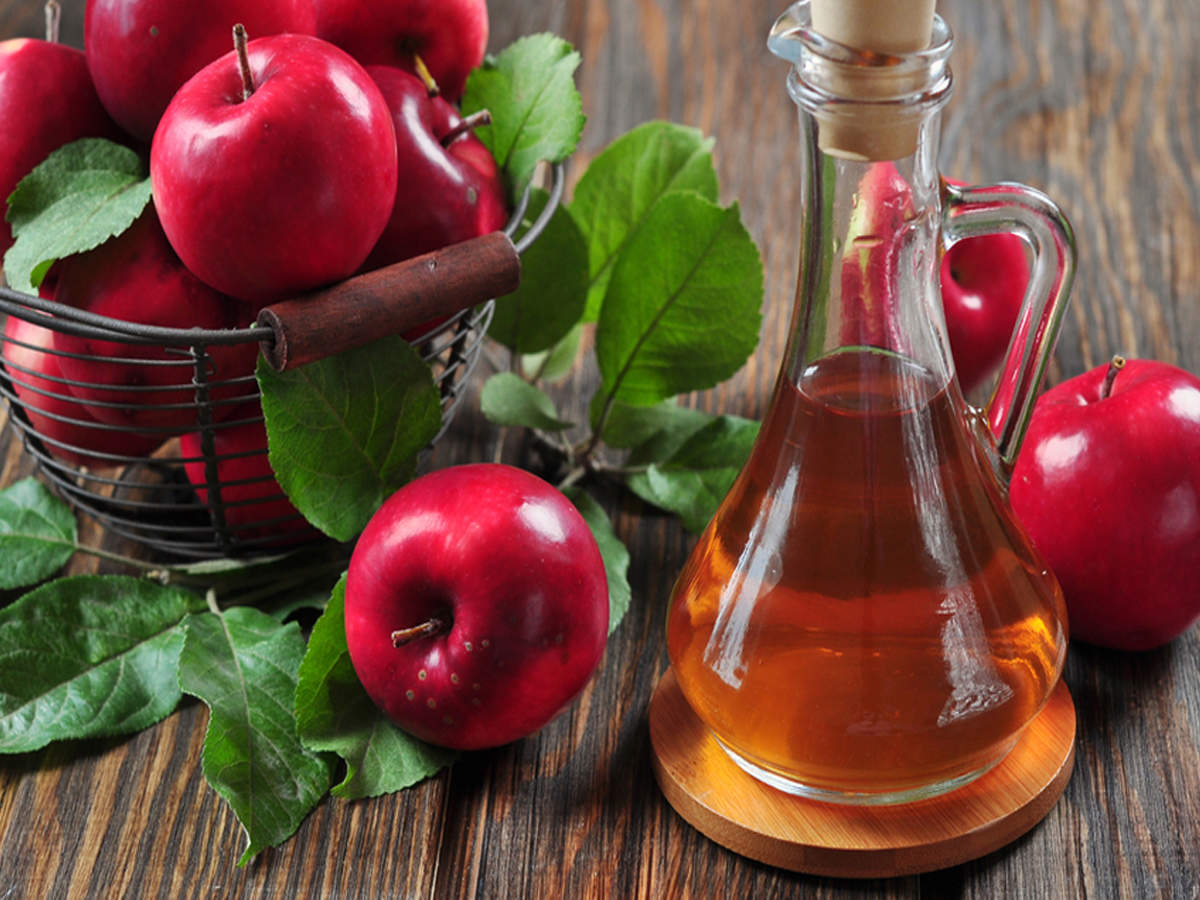
Ludhiana: The groundwater table is declining at an alarming rate of 0.49 metres annually in Punjab. According to a recent report, out of 138 blocks of the state, 109 are ‘over-exploited’, 2 are ‘critical’, 5 are ‘semi-critical’, and 22 are in the ‘safe’ category.
There is an urgent need to optimize groundwater use, along with recharging groundwater in the over-exploited blocks, and development of available shallow groundwater in the safe blocks to avoid water-logging in the foreseeable future. The irrigation policy also needs review vis-a-vis the prevailing hydrogeological scenario.
KG Singh, head of Department of Soil & Water Engineering in Punjab Agricultural University (PAU), blames the lack of proper planning of systematic groundwater extraction, change in cropping pattern, increase in the number of tubewells, decline in canal irrigated area in paddy-dominated central Punjab, and decrease in average annual rainfall as various factors for depleting groundwater.
Singh said: “Keeping in view the present situation, and to safeguard the future of coming generations, there is a need to adopt a number of water-saving and conservation technologies on a large-scale for optimal use of available water resources to sustain agriculture.”
He added: “Water — the lifeline of agriculture — has to be used judiciously for sustainable development of agriculture. When we conserve water, we conserve power, and we are more environment-friendly. We must save our natural resources to meet the requirements of ever-increasing population. PAU has already recommended following water-saving and conservation measures to check the decline of groundwater.”
Punjab is the most intensively cultivated and irrigated state in India. It occupies 1.5 % of the total geographical area of the country. It is almost 100% irrigated, out of which 72% area is being served through tubewells. In view of this alarming situation, and to check the decline in groundwater level, the Government of Punjab has enacted Preservation of Sub-Soil Water Ordinance Act in 2008-2009, and notified the starting date for paddy transplantation as June 10. This date for start of paddy transplantation was revised to June 15 in 2014, and June 20 in 2018.
Recently, a report published by the Central Ground Water Board (CGWB) — a central body on the subject for the state of Punjab. As per the report, the groundwater recharge is estimated to be 21.58 billion cubic metres (BCM) against gross water with drawl of 35.78 BCM, which seems to be quite alarming, as these rates may deplete groundwater resources up to a depth of 300m, and can create conditions similar to a desert in the state of Punjab in the next 25 years.
Reasons for groundwater crisis
The present situation on groundwater resources is because of the following reasons:
1) Lack of proper planning of systematic groundwater extraction: Over-exploitation of groundwater has been taking place to meet the increased demand of irrigation water for crop production, industrial, and domestic sectors because of property-based rights, which refer to the right of every land-owner to collect and dispose within his own limits all water under the land which does not pass in a defined channel. This resource has thus been exploited and used in a very carefree manner without any sound and scientific policy from the government side.
2) Change in cropping pattern: Of the total geographical area of Punjab, 82.2% is irrigated, and the cropping intensity is 204%. The cropping pattern has shifted from cotton, maize, oilseeds, and pulses to paddy (less water consuming to a more water-consuming crop). In 1970-1971, the area under paddy was 0.39 million hectares, which increased to 2.61 million hectares in 2000-01, and further to 3.06 million hectares in 2017-18, and the area under crops like pulses, oilseeds, and cotton reduced during the same time period. Paddy crop is considered being risk-free crop in terms of marketing, weather conditions, and crop health. The irrigation requirement of paddy ranges from 150-200cm, which is not fulfilled by rainfall, so irrigation demand is fulfilled by groundwater.
3) Increase in number of tubewells: The number of tubewells has increased from 0.19 million to 1.42 million for the period 1970-71 to 2016-17. The increased number of tubewells increases the draft of groundwater, which results in a continuous decline of the water table. The density of tubewells is already more than 35 per sq km in Barnala, Fatehgarh Sahib, Jalandhar, Kapurthala, Ludhiana, Moga, Nawanshahr, and Sangrur districts. It ranges from 20-30 per sq km in Amritsar, Bathinda, Faridkot, Gurdaspur, Mansa, Patiala, and Tarn Taran, all of which have resulted in mining of groundwater resources, and a resulting decline in the water table. It is worth mentioning that the districts showing maximum decline rates are predominantly paddy-growing areas having a tubewell density of more than 25 per sq km. Clearly, the share of tubewells and area under paddy in these districts is much higher than the share of the net sown area.
4) Decline in canal irrigated area in paddy-dominated Central Punjab: Although Punjab has a good network of canal and river systems, the decreasing trend of rainfall coupled with intensive agriculture has led to a shift in the source of irrigation with 2.948 million hectares (71%) being irrigated by tubewells, and the remaining area of 1.176 million hectares (29%) being irrigated by canals. The reduction of canal water demand in central and north-east Punjab has basically led to an increase in canal water supply and canal irrigated areas in south-west Punjab. This ultimately culminated into an excessive fall in the groundwater table in central Punjab, and water-logging in south-west Punjab.
5) Decrease in average annual rainfall: The dependency on groundwater irrigation has further increased due to weakening volume and fluctuating pattern of rainfall over time. There is a reduction in the annual average rainfall during the past 17 years. For example, the normal rainfall of Amritsar is 599mm, and the average rainfall of the past 16 years has been 418.7mm, thus showing a reduction in rainfall by 184.8mm.
The following strategies need to be followed to increase the groundwater table:
• Shifting the date of transplantation: Delay of one day in transplantation is likely to arrest the water table fall by 1.5cm (rice area of 30 lakh hectares, which is approximately 60% of the state’s total area), considering that the entire area of rice is transplanted on or after June 10.
• Use of micro-irrigation: Micro-irrigation is one of the best options for sustainable development of agriculture in the state. There is a vast potential for micro-irrigation in the state. Converting 1% of wheat area (35,000 hectares) in a year on drip irrigation system under rice-wheat cropping system, can arrest the decline of groundwater by 3cm per year. There will be 40-50% water saving if the area under fruits, vegetables, sugarcane, and cotton are brought under the drip irrigation system. The total area under these crops is around 0.73 million hectares.
• Renovation of village ponds: There are about 12,000 village ponds. A study carried out by the department revealed that renovation and utilizing water stored in these ponds can check the declining water table by about 6cm per year.
• Under climate change scenario, increase the dyke height in paddy fields: Changing climatic patterns have resulted in less number of rainy days across the state and intense storm events. To conserve maximum rainwater, it is suggested that the dyke height in paddy fields be increased. The optimum effective dyke height in paddy fields should be 15, 17.5 and 22.5cm for light, medium, and heavy soils respectively. If this practice is adopted at the state level, it will result in an average savings of irrigation water by 3cm. This saving in water will check the decline in water table to an extent of 9cm per year.
• Water saving through combined effect of laser land leveller + optimum plot size + 2 weeks ponding + short duration cultivar + transplanting after June 20 + Irrigation suspension 10-15 days before harvesting: Water saving could be 20-25% in rice crop and laser levelling + optimum plot size in wheat crop can save 10-15% water. Converting 1% of wheat area (35,000 ha) in a year under this system in rice-wheat cropping system can arrest the decline of groundwater by 1.5cm per year. Water saving through individual intervention is i) Adoption of short duration cultivar of paddy (10% water saving) ii) Use of laser leveller: (10-15% water saving) iii) Proper size of borders: Optimum plot size (10% water saving even in paddy). Keeping 60-66m border length, and a tubewell having delivery pipe size of 3-4 inches, the number of borders in one acre should be 15-16 plots for light soils,10-11 for medium soils, and 7-8 for heavy soils.
• Underground pipeline system: Reduces conveyance losses up to 30-35% over the earthen channels in light to medium type of soil
• Furrow irrigation in row crops: 20-25 % water saving over conventional flood irrigation.
Low impact development (LID) practices:
a) Rooftop rainwater harvesting: Rainwater harvesting through rooftop is one of the simple, economical, and eco-friendly techniques which can be used for artificial groundwater recharge at the mass level. This will not only improve the quality of groundwater, but also check the declining watertable to some extent. Besides this, it will improve the condition of roads and also tackle the problem of mosquitoes. The technology has a potential of harvesting 135 million cubic metres of rainwater for groundwater recharge each year, and also arrest the declining groundwater up to 0.5-1cm every year. The major cities of the state have haltingly adopted rainwater harvesting programmes. Scaling up such efforts through implementable policy frameworks and additional incentives can significantly improve water availability.
b) Stormwater management along the roadsides: Urbanization is taking place at a rate of 6% per decade. The minimum norms of green belts being about 30% of the total area are generally flouted by builders for their benefits. Green areas along the roadsides are also shrinking. Due to the lack of green areas, huge quantities of runoff are being generated, which the existing collection systems are unable to handle, leading to flooding conditions even during moderate rainfall. Also, there is no separate drainage system for stormwater management. There is a need for revamping stormwater management system, and major modification in landscapes to conserve and recharge rainwater. Technology to be developed for stormwater management along the roadsides using bio-retention cells/ ponds along the roadsides increases the groundwater recharge.
Policy Interventions
1) Crop Diversification: In Punjab, due to the increased profitability and assured prices, there has been a major shift from traditional crops towards the monoculture of paddy-wheat rotation. But this monoculture has taken a toll on the natural resources of the state’s groundwater. Since the late 1980s, it is being felt that these profits may not be sustainable, both environmentally as well as commercially. The declining water tables are putting pressures on the entire economy of Punjab. It is an established fact that sustainability of any agricultural production system is based on optimal utilization of resources, such as land and water. So, there is a dire need to shift from this monoculture to diversified cropping pattern to achieve sustainable agriculture.
2) Restoring the canal system in central Punjab: The area under canal irrigation in Punjab in the year 1990-91 was 1560 thousand hectares, which subsequently decreased to 1186 thousand hectares in 2016-17 i.e. a decrease of 374,000 hectares. In central Punjab only, the area under canal irrigation has decreased by 327,000 hectares. This is mainly due to increase in tubewells in this area and free electricity for their operation. Moreover, the convenience of using tubewells over weekly available canal water has reduced the interest of farmers in maintaining the common water courses. In fact in some areas, farmers had completely encroached upon the common water course land, leading to disappearance of water courses, and canal water was diverted to south-west Punjab where tubewells were not feasible due to poor quality ground water. The excess canal water should be diverted through suitable filtration and recharge structures which can be installed along the sides of the canals to augment groundwater supplies in central Punjab if it is not used by the farmers at present.
i) The state had about 14,500km-long canal network, and about one lakh km of watercourses, providing irrigation to 1.19 million hectares, which is 28.8% of total culturable area of the state. There is a need to restore field distributaries and water course network or utilize canal water for recharging through suitable methods.
ii) Change in roster plan of canals: Currently, rostering plans of canals are formulated considering the availability of canal water without consideration of groundwater potential, water level and water demand for irrigation in the area. As a part of new strategies, it would be desirable that roster plans of canals are designed based on groundwater availability and use, so as to sustain the use of water resources on a long-term basis.
3) Reducing conveyance losses: Lining of water courses and field channels is an effective way of minimizing conveyance losses. Conveyance losses (30-35%) can also be avoided by using an underground pipeline system where water is conveyed in a pipeline. Underground pipeline system to propagate on-farm water conservation by replacing low-efficiency kutcha field irrigation channels by UGPL.
4) Reuse of wastewater: Urban wastewater generated in Punjab is 1,664 million litres per day (MLD) and installed treatment capacity of municipal STPs available is 1,245.45 MLD. The operational capacity is 921.45 MLD. The number of municipal STPs are 86, operational STPs are 38, non-operational STPs are 4, under-construction STPs are 31, and proposed STPs are 13. The treated water can be used for irrigation through a network of underground pipelines.
RAINFALL SHORTAGE
District: Shortfall (in % for past 16 years)
Bathinda: 29.8
Faridkot: 12.2
Fatehgarh Sahib: 40.8
Ferozepur: 59.0
Hoshiarpur: 34.3
Jalandhar: 30.8
Kapurthala: 32.5
Ludhiana: 28.8
Mansa: 59.7
Moga: 41.7
SBS Nagar: 31.0
Patiala: 13.6
Rupnagar: 12.5
Sangrur: 44.3
There is an urgent need to optimize groundwater use, along with recharging groundwater in the over-exploited blocks, and development of available shallow groundwater in the safe blocks to avoid water-logging in the foreseeable future. The irrigation policy also needs review vis-a-vis the prevailing hydrogeological scenario.
KG Singh, head of Department of Soil & Water Engineering in Punjab Agricultural University (PAU), blames the lack of proper planning of systematic groundwater extraction, change in cropping pattern, increase in the number of tubewells, decline in canal irrigated area in paddy-dominated central Punjab, and decrease in average annual rainfall as various factors for depleting groundwater.
Singh said: “Keeping in view the present situation, and to safeguard the future of coming generations, there is a need to adopt a number of water-saving and conservation technologies on a large-scale for optimal use of available water resources to sustain agriculture.”
He added: “Water — the lifeline of agriculture — has to be used judiciously for sustainable development of agriculture. When we conserve water, we conserve power, and we are more environment-friendly. We must save our natural resources to meet the requirements of ever-increasing population. PAU has already recommended following water-saving and conservation measures to check the decline of groundwater.”
Punjab is the most intensively cultivated and irrigated state in India. It occupies 1.5 % of the total geographical area of the country. It is almost 100% irrigated, out of which 72% area is being served through tubewells. In view of this alarming situation, and to check the decline in groundwater level, the Government of Punjab has enacted Preservation of Sub-Soil Water Ordinance Act in 2008-2009, and notified the starting date for paddy transplantation as June 10. This date for start of paddy transplantation was revised to June 15 in 2014, and June 20 in 2018.
Recently, a report published by the Central Ground Water Board (CGWB) — a central body on the subject for the state of Punjab. As per the report, the groundwater recharge is estimated to be 21.58 billion cubic metres (BCM) against gross water with drawl of 35.78 BCM, which seems to be quite alarming, as these rates may deplete groundwater resources up to a depth of 300m, and can create conditions similar to a desert in the state of Punjab in the next 25 years.
Reasons for groundwater crisis
The present situation on groundwater resources is because of the following reasons:
1) Lack of proper planning of systematic groundwater extraction: Over-exploitation of groundwater has been taking place to meet the increased demand of irrigation water for crop production, industrial, and domestic sectors because of property-based rights, which refer to the right of every land-owner to collect and dispose within his own limits all water under the land which does not pass in a defined channel. This resource has thus been exploited and used in a very carefree manner without any sound and scientific policy from the government side.
2) Change in cropping pattern: Of the total geographical area of Punjab, 82.2% is irrigated, and the cropping intensity is 204%. The cropping pattern has shifted from cotton, maize, oilseeds, and pulses to paddy (less water consuming to a more water-consuming crop). In 1970-1971, the area under paddy was 0.39 million hectares, which increased to 2.61 million hectares in 2000-01, and further to 3.06 million hectares in 2017-18, and the area under crops like pulses, oilseeds, and cotton reduced during the same time period. Paddy crop is considered being risk-free crop in terms of marketing, weather conditions, and crop health. The irrigation requirement of paddy ranges from 150-200cm, which is not fulfilled by rainfall, so irrigation demand is fulfilled by groundwater.
3) Increase in number of tubewells: The number of tubewells has increased from 0.19 million to 1.42 million for the period 1970-71 to 2016-17. The increased number of tubewells increases the draft of groundwater, which results in a continuous decline of the water table. The density of tubewells is already more than 35 per sq km in Barnala, Fatehgarh Sahib, Jalandhar, Kapurthala, Ludhiana, Moga, Nawanshahr, and Sangrur districts. It ranges from 20-30 per sq km in Amritsar, Bathinda, Faridkot, Gurdaspur, Mansa, Patiala, and Tarn Taran, all of which have resulted in mining of groundwater resources, and a resulting decline in the water table. It is worth mentioning that the districts showing maximum decline rates are predominantly paddy-growing areas having a tubewell density of more than 25 per sq km. Clearly, the share of tubewells and area under paddy in these districts is much higher than the share of the net sown area.
4) Decline in canal irrigated area in paddy-dominated Central Punjab: Although Punjab has a good network of canal and river systems, the decreasing trend of rainfall coupled with intensive agriculture has led to a shift in the source of irrigation with 2.948 million hectares (71%) being irrigated by tubewells, and the remaining area of 1.176 million hectares (29%) being irrigated by canals. The reduction of canal water demand in central and north-east Punjab has basically led to an increase in canal water supply and canal irrigated areas in south-west Punjab. This ultimately culminated into an excessive fall in the groundwater table in central Punjab, and water-logging in south-west Punjab.
5) Decrease in average annual rainfall: The dependency on groundwater irrigation has further increased due to weakening volume and fluctuating pattern of rainfall over time. There is a reduction in the annual average rainfall during the past 17 years. For example, the normal rainfall of Amritsar is 599mm, and the average rainfall of the past 16 years has been 418.7mm, thus showing a reduction in rainfall by 184.8mm.
The following strategies need to be followed to increase the groundwater table:
• Shifting the date of transplantation: Delay of one day in transplantation is likely to arrest the water table fall by 1.5cm (rice area of 30 lakh hectares, which is approximately 60% of the state’s total area), considering that the entire area of rice is transplanted on or after June 10.
• Use of micro-irrigation: Micro-irrigation is one of the best options for sustainable development of agriculture in the state. There is a vast potential for micro-irrigation in the state. Converting 1% of wheat area (35,000 hectares) in a year on drip irrigation system under rice-wheat cropping system, can arrest the decline of groundwater by 3cm per year. There will be 40-50% water saving if the area under fruits, vegetables, sugarcane, and cotton are brought under the drip irrigation system. The total area under these crops is around 0.73 million hectares.
• Renovation of village ponds: There are about 12,000 village ponds. A study carried out by the department revealed that renovation and utilizing water stored in these ponds can check the declining water table by about 6cm per year.
• Under climate change scenario, increase the dyke height in paddy fields: Changing climatic patterns have resulted in less number of rainy days across the state and intense storm events. To conserve maximum rainwater, it is suggested that the dyke height in paddy fields be increased. The optimum effective dyke height in paddy fields should be 15, 17.5 and 22.5cm for light, medium, and heavy soils respectively. If this practice is adopted at the state level, it will result in an average savings of irrigation water by 3cm. This saving in water will check the decline in water table to an extent of 9cm per year.
• Water saving through combined effect of laser land leveller + optimum plot size + 2 weeks ponding + short duration cultivar + transplanting after June 20 + Irrigation suspension 10-15 days before harvesting: Water saving could be 20-25% in rice crop and laser levelling + optimum plot size in wheat crop can save 10-15% water. Converting 1% of wheat area (35,000 ha) in a year under this system in rice-wheat cropping system can arrest the decline of groundwater by 1.5cm per year. Water saving through individual intervention is i) Adoption of short duration cultivar of paddy (10% water saving) ii) Use of laser leveller: (10-15% water saving) iii) Proper size of borders: Optimum plot size (10% water saving even in paddy). Keeping 60-66m border length, and a tubewell having delivery pipe size of 3-4 inches, the number of borders in one acre should be 15-16 plots for light soils,10-11 for medium soils, and 7-8 for heavy soils.
• Underground pipeline system: Reduces conveyance losses up to 30-35% over the earthen channels in light to medium type of soil
• Furrow irrigation in row crops: 20-25 % water saving over conventional flood irrigation.
Low impact development (LID) practices:
a) Rooftop rainwater harvesting: Rainwater harvesting through rooftop is one of the simple, economical, and eco-friendly techniques which can be used for artificial groundwater recharge at the mass level. This will not only improve the quality of groundwater, but also check the declining watertable to some extent. Besides this, it will improve the condition of roads and also tackle the problem of mosquitoes. The technology has a potential of harvesting 135 million cubic metres of rainwater for groundwater recharge each year, and also arrest the declining groundwater up to 0.5-1cm every year. The major cities of the state have haltingly adopted rainwater harvesting programmes. Scaling up such efforts through implementable policy frameworks and additional incentives can significantly improve water availability.
b) Stormwater management along the roadsides: Urbanization is taking place at a rate of 6% per decade. The minimum norms of green belts being about 30% of the total area are generally flouted by builders for their benefits. Green areas along the roadsides are also shrinking. Due to the lack of green areas, huge quantities of runoff are being generated, which the existing collection systems are unable to handle, leading to flooding conditions even during moderate rainfall. Also, there is no separate drainage system for stormwater management. There is a need for revamping stormwater management system, and major modification in landscapes to conserve and recharge rainwater. Technology to be developed for stormwater management along the roadsides using bio-retention cells/ ponds along the roadsides increases the groundwater recharge.
Policy Interventions
1) Crop Diversification: In Punjab, due to the increased profitability and assured prices, there has been a major shift from traditional crops towards the monoculture of paddy-wheat rotation. But this monoculture has taken a toll on the natural resources of the state’s groundwater. Since the late 1980s, it is being felt that these profits may not be sustainable, both environmentally as well as commercially. The declining water tables are putting pressures on the entire economy of Punjab. It is an established fact that sustainability of any agricultural production system is based on optimal utilization of resources, such as land and water. So, there is a dire need to shift from this monoculture to diversified cropping pattern to achieve sustainable agriculture.
2) Restoring the canal system in central Punjab: The area under canal irrigation in Punjab in the year 1990-91 was 1560 thousand hectares, which subsequently decreased to 1186 thousand hectares in 2016-17 i.e. a decrease of 374,000 hectares. In central Punjab only, the area under canal irrigation has decreased by 327,000 hectares. This is mainly due to increase in tubewells in this area and free electricity for their operation. Moreover, the convenience of using tubewells over weekly available canal water has reduced the interest of farmers in maintaining the common water courses. In fact in some areas, farmers had completely encroached upon the common water course land, leading to disappearance of water courses, and canal water was diverted to south-west Punjab where tubewells were not feasible due to poor quality ground water. The excess canal water should be diverted through suitable filtration and recharge structures which can be installed along the sides of the canals to augment groundwater supplies in central Punjab if it is not used by the farmers at present.
i) The state had about 14,500km-long canal network, and about one lakh km of watercourses, providing irrigation to 1.19 million hectares, which is 28.8% of total culturable area of the state. There is a need to restore field distributaries and water course network or utilize canal water for recharging through suitable methods.
ii) Change in roster plan of canals: Currently, rostering plans of canals are formulated considering the availability of canal water without consideration of groundwater potential, water level and water demand for irrigation in the area. As a part of new strategies, it would be desirable that roster plans of canals are designed based on groundwater availability and use, so as to sustain the use of water resources on a long-term basis.
3) Reducing conveyance losses: Lining of water courses and field channels is an effective way of minimizing conveyance losses. Conveyance losses (30-35%) can also be avoided by using an underground pipeline system where water is conveyed in a pipeline. Underground pipeline system to propagate on-farm water conservation by replacing low-efficiency kutcha field irrigation channels by UGPL.
4) Reuse of wastewater: Urban wastewater generated in Punjab is 1,664 million litres per day (MLD) and installed treatment capacity of municipal STPs available is 1,245.45 MLD. The operational capacity is 921.45 MLD. The number of municipal STPs are 86, operational STPs are 38, non-operational STPs are 4, under-construction STPs are 31, and proposed STPs are 13. The treated water can be used for irrigation through a network of underground pipelines.
RAINFALL SHORTAGE
District: Shortfall (in % for past 16 years)
Bathinda: 29.8
Faridkot: 12.2
Fatehgarh Sahib: 40.8
Ferozepur: 59.0
Hoshiarpur: 34.3
Jalandhar: 30.8
Kapurthala: 32.5
Ludhiana: 28.8
Mansa: 59.7
Moga: 41.7
SBS Nagar: 31.0
Patiala: 13.6
Rupnagar: 12.5
Sangrur: 44.3
World Cup 2019
Trending Topics
LATEST VIDEOS
More from TOI
Navbharat Times
Featured Today in Travel
Quick Links
Lok Sabha Election Schedule 2019Lok Sabha Election NewsDelhi Capitals teamMI team 2019Rajasthan Royals 2019RCB team 2019Maharashtra Lok Sabha ConstituenciesBJP Candidate ListBJP List 2019 TamilnaduShiv Sena List 2019AP BJP List 2019Mamata BanerjeeBJP List 2019 MaharashtraPriyanka GandhiBJP List 2019 KarnatakaAMMK Candidate List 2019BJP List 2019 WBLok Sabha Elections in Tamil NaduBSP List 2019 UPNews in TamilLok Sabha Poll 2019Satta Matka 2018PM ModiMahagathbandhanNagpur BJP Candidate ListChandrababu NaiduTamil Nadu ElectionsUrmila MatondkarNews in TeluguMadras High CourtTejashwi YadavArvind KejriwalTejasvi SuryaPawan KalyanArvind KejriwalYogi AdityanathJaya PradaSatta King 2019Srinagar encounter
Get the app







